I was very excited when the intro guide to our cottage for our Sew & Eat Historical Retreat said that we could put all the food scraps in a bin for the pigs. I’m always a fan of anything that keeps food out of the rubbish (food waste is a huge contributor to climate change – food rotting without air creates carbon).
I was even more excited when we arrived, and it turned out that the pigs were pet kunekune pigs, not farm porkers destined for the slaughterhouse. And we could feed them and pet them!
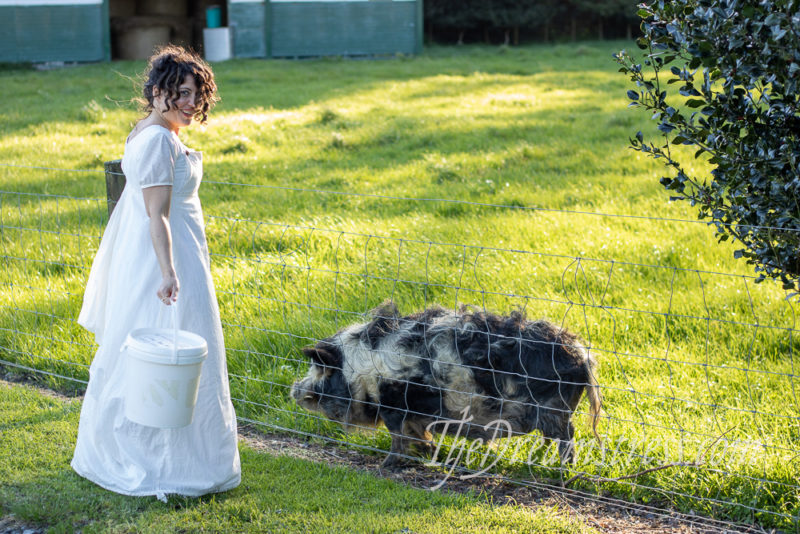
Happiness!
Kunekune pigs are descended from domestic pigs that were brought to New Zealand from Asia by whalers or traders in the early 19th century. They are now a unique breed of their own, from isolation, or crossbreeding, or because the breeds they descended from have since gone extinct (as has happened with so many breeds of domestic farm animals in the last 200 years).
Kune means plump in te reo MÄori, and when you double up a word in MÄori, it doubles the meaning, so kunekune means really plump – fat and round and roly-poly. And that’s definitely what kunekune pigs are!
In addition to being adorably round, kunekune have thick bristle coats, little dangly wattles hanging from their lower jaw, the sweetest smiles, and absolutely adorable personalities. They are particularly sweet, chilled, friendly, pigs. They make fabulous pets, but don’t make particularly good eating pigs.
They are quite small as a pig breed goes (topping out at 200kg compared to the 400kg that many farm breeds reach), and take a long time to come to their full size (2-3 years, compared to 6-12 months). In modern farming the goal is to get your animal as big as possible as fast as possible. Kunekunes fail this test in every way – which almost led to the total disappearance of the breed.
As farmers focused on better yields in the post WWII era, and traditional MÄori farming became less and less common, kunekune pigs fell out of favour. By the late 1970s they were almost extinct, with as few as 50 left. A couple of conservationists, including the man behind Staglands here in Wellington, noticed that the breed was at risk, and gathered all the purebreeds they could find, and rescued the breed.
They were much luckier than many breeds: dozens of varieties of pigs across Europe (and I think, Asia, though there is less information on that) disappeared in the 2nd half of the 20th century, as farming became standardised and farmers focused on ultimate yields and animals that could withstand large scale industrial farming operations, rather than animals bred for the specific weather and land conditions of their area. The same thing happened to huge amounts of plant and animal varieties, severely impacting the diversity of agricultural varieties.
Today kunekune pigs are super popular as pets on farms and lifestyle blocks, both here in NZ and overseas. I met my first kunekunes when I was first in NZ as a student. We stayed at a backpackers in the Far North that had a litter of piglets during the term break. Pretty much the cutest thing you’ve ever seen!
Fully grown kunekune aren’t quite as cute, but they are still pretty wonderful. The two on our farm were named Bert & Ernie. They had a huge lovely lush paddock to root around in (kunekune are possible the only true grazing pigs that can survive on grass alone, like a sheep or cow), trees and a barn to shelter in, and were pretty much pigs in clover.
Despite all the grass, they were delighted to be fed additional treats, running across the paddock to their trough if you beat on the food bucket.
We fed them at the start of one walk, and left the bucket hanging on a holly tree.
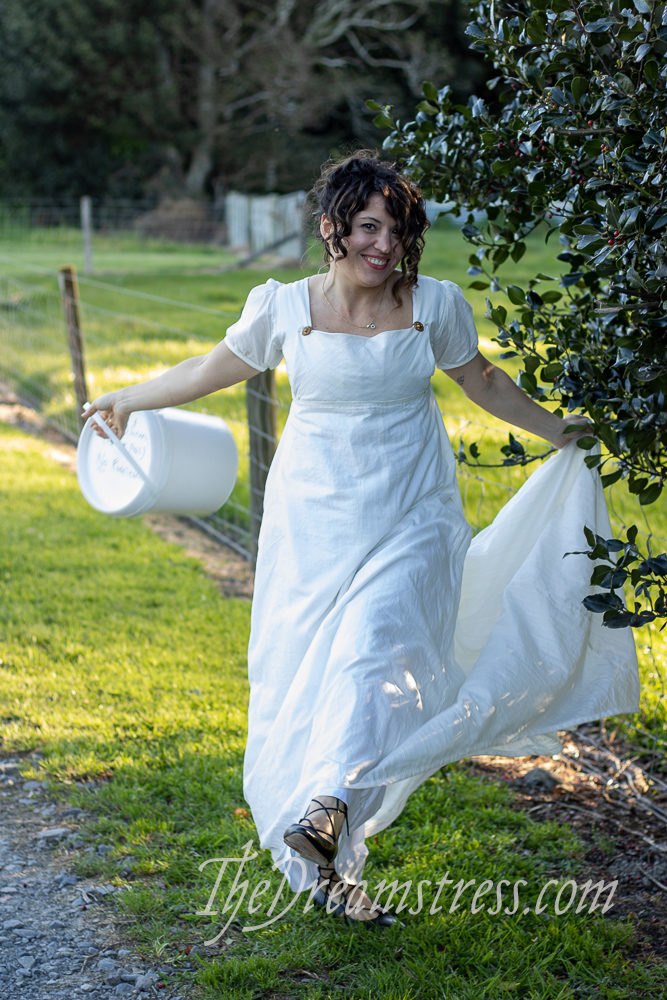
We came back to get it later in the day, and Miss Priscilla decided she wanted to see the piggies again. So she beat on the bucket, and the boys rushed out of the barn and across the paddock, eager for another round of goodies.
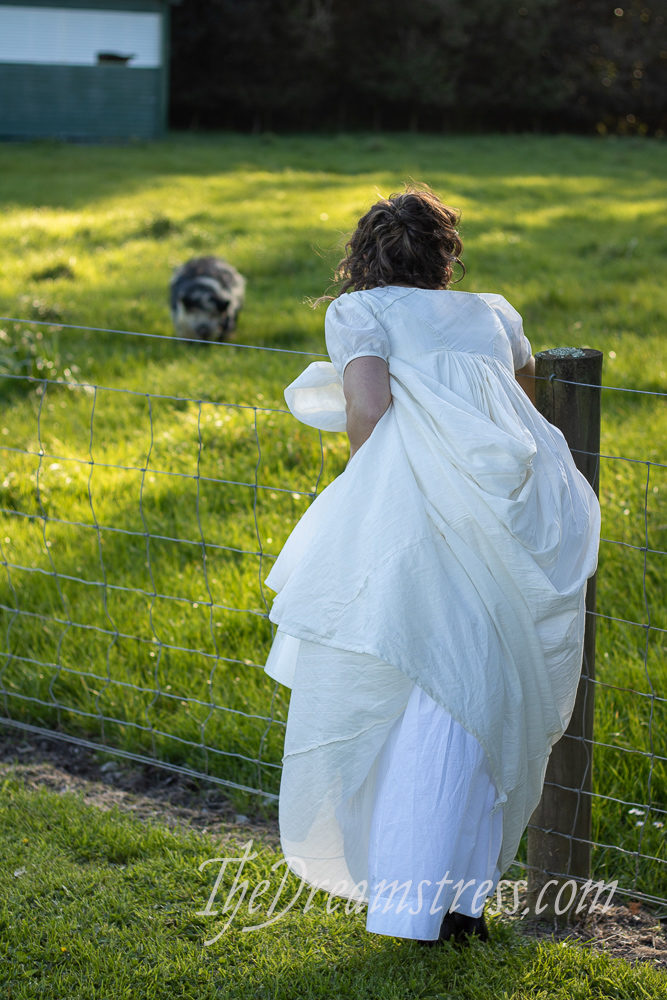
(just look at that happy piggieface, sure it’s about to get a treat!)
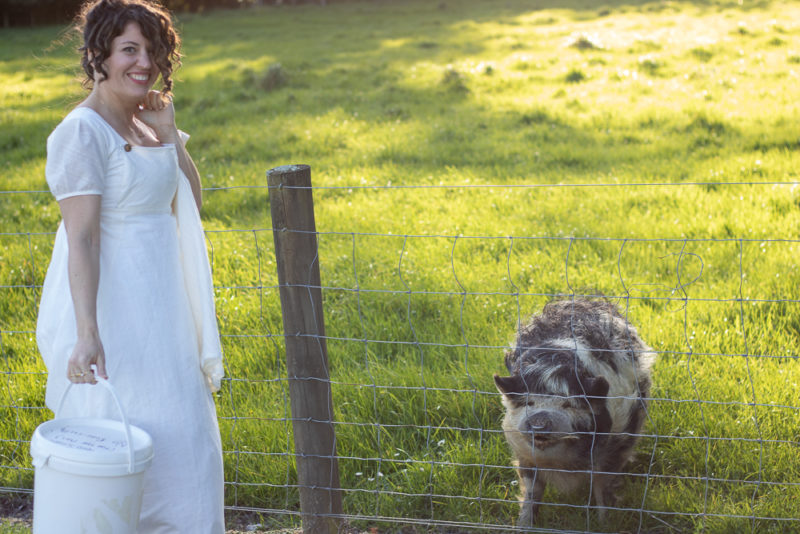
But of course, there were no treats, just an empty bucket!
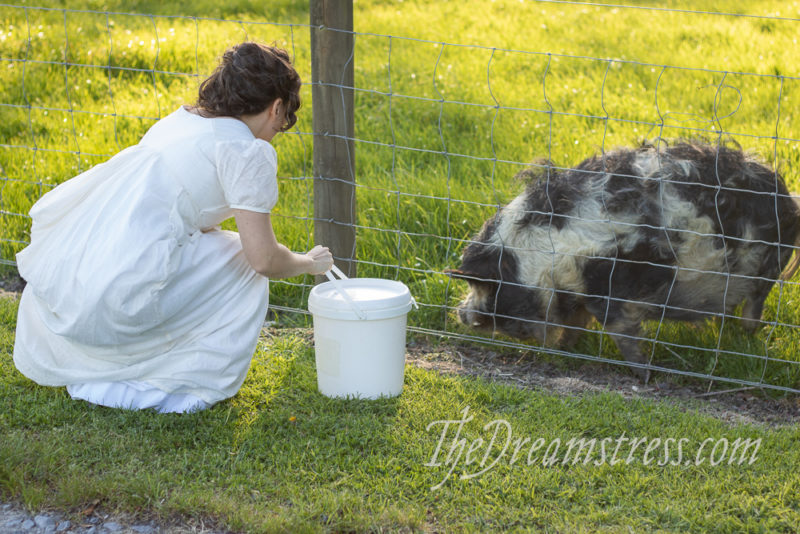
And some sad, sad piggies…
(just look at that disappointed face, wondering where its treat is!)
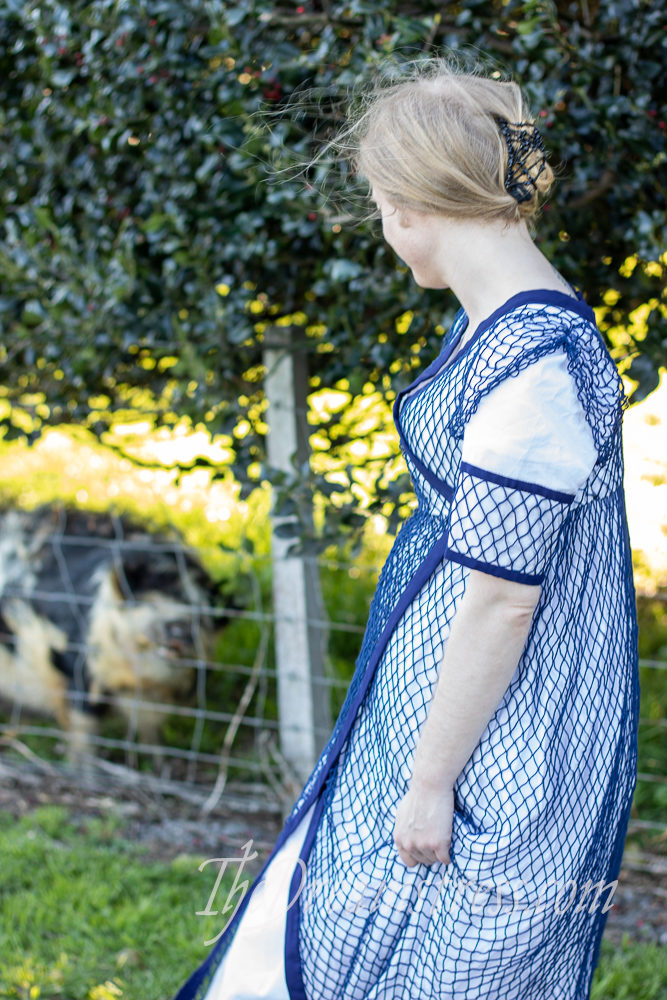
So after teasing Priscilla mercilessly for being horrible and deceitful, we had to go back to the cottage and cut up a couple of apples for Bert and Ernie, and then trot back up the lane and feed them so they wouldn’t think we were awful and untrustworthy…
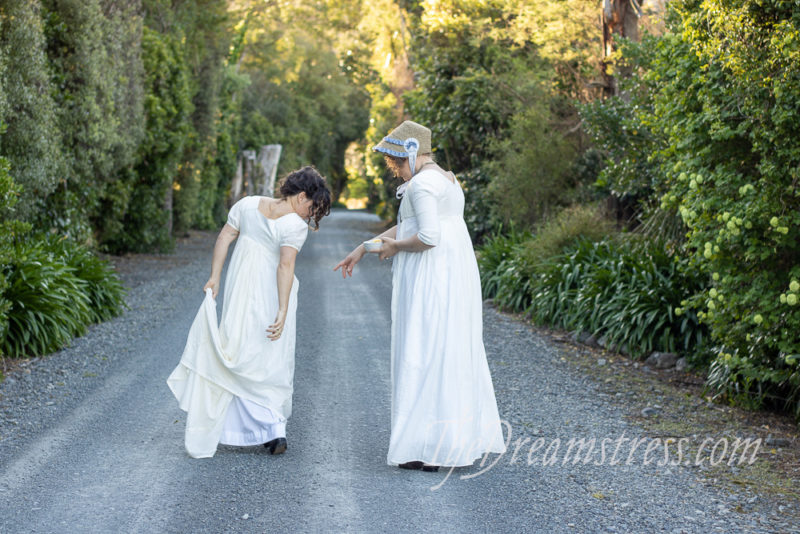
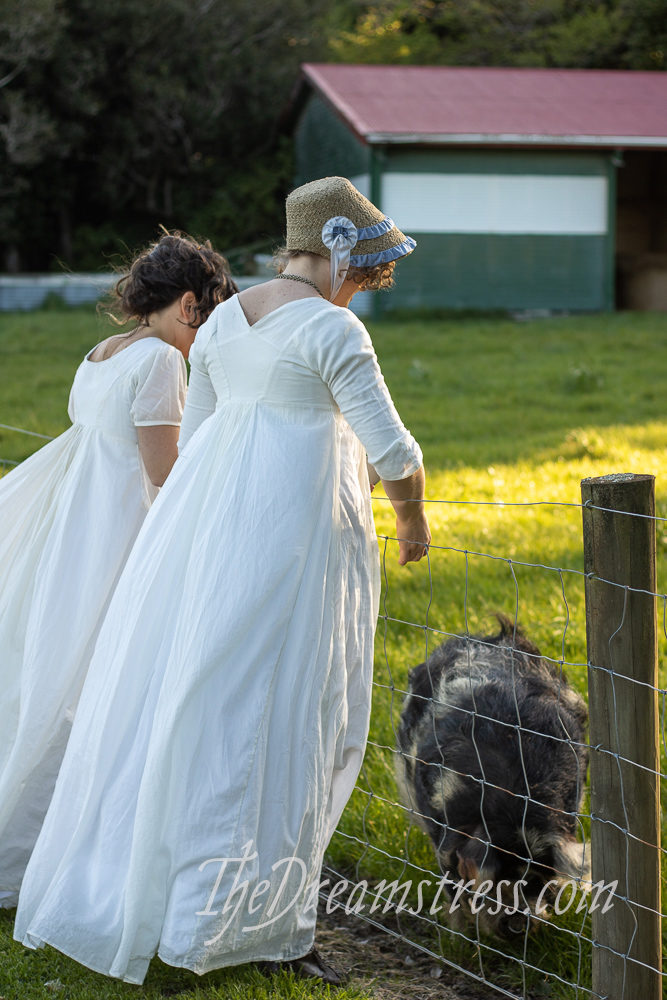
And then we got to feed them properly, and I got to give them scratchies and snuggles.
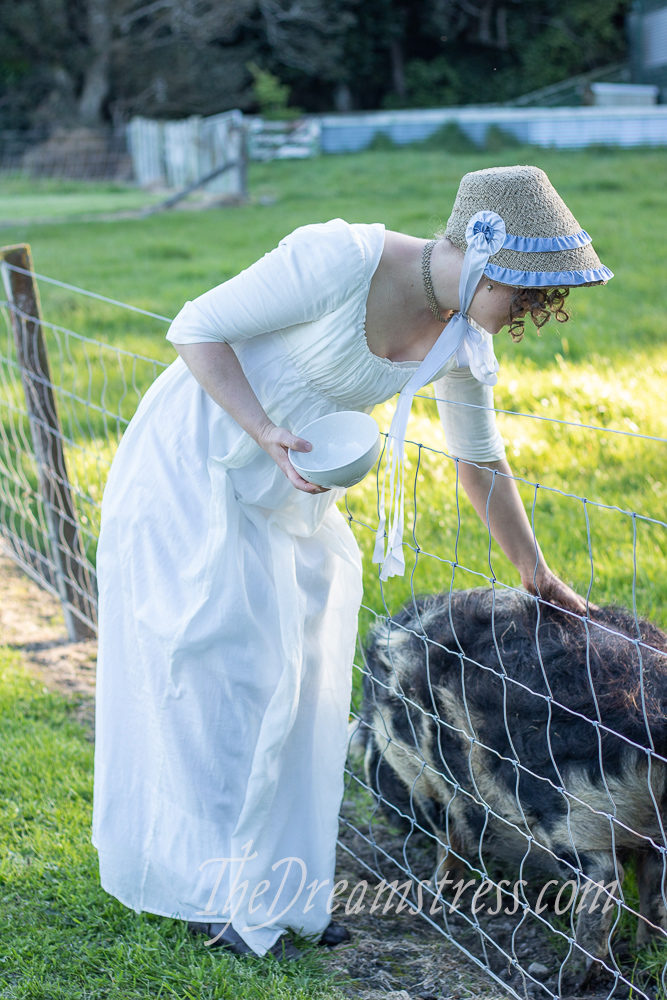
Spending time with a pig breed that has been in NZ since the (late) Regency era while wearing Regency clothes seems quite appropriate, even if the fashions and the pigs never interacted in their own time.
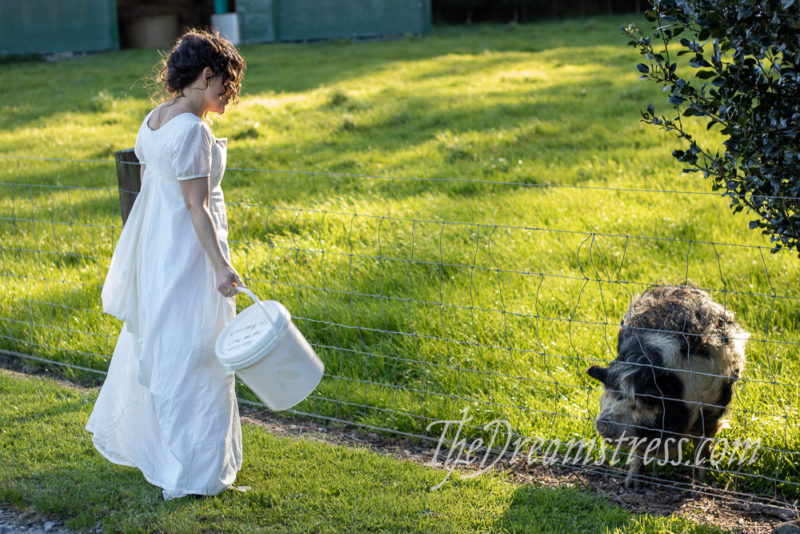
Also, the piggies were just so cute and lovely!
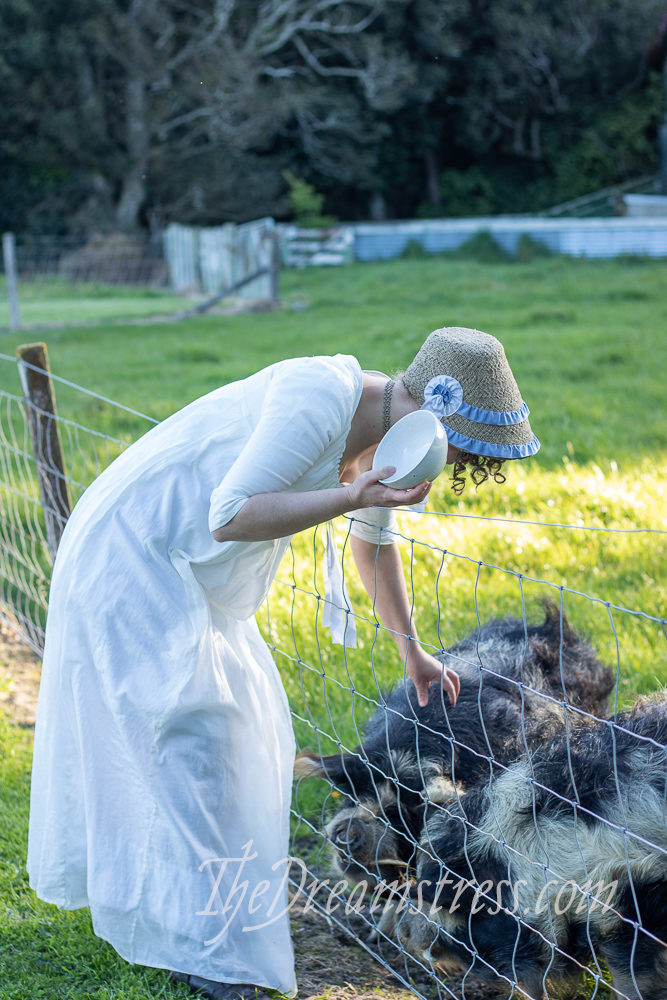
Happy piggies, happy me!
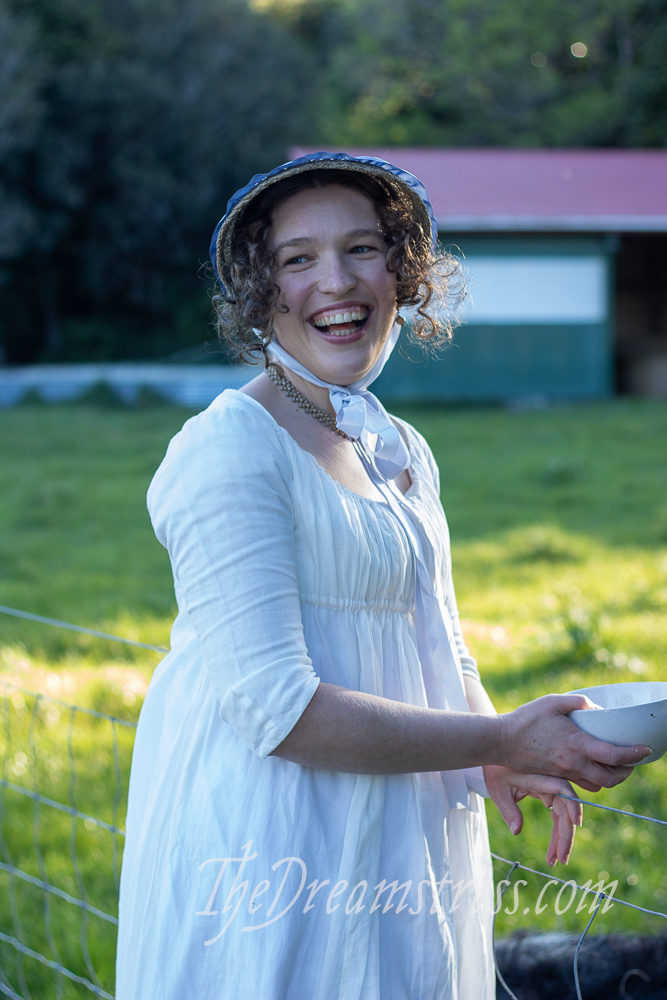

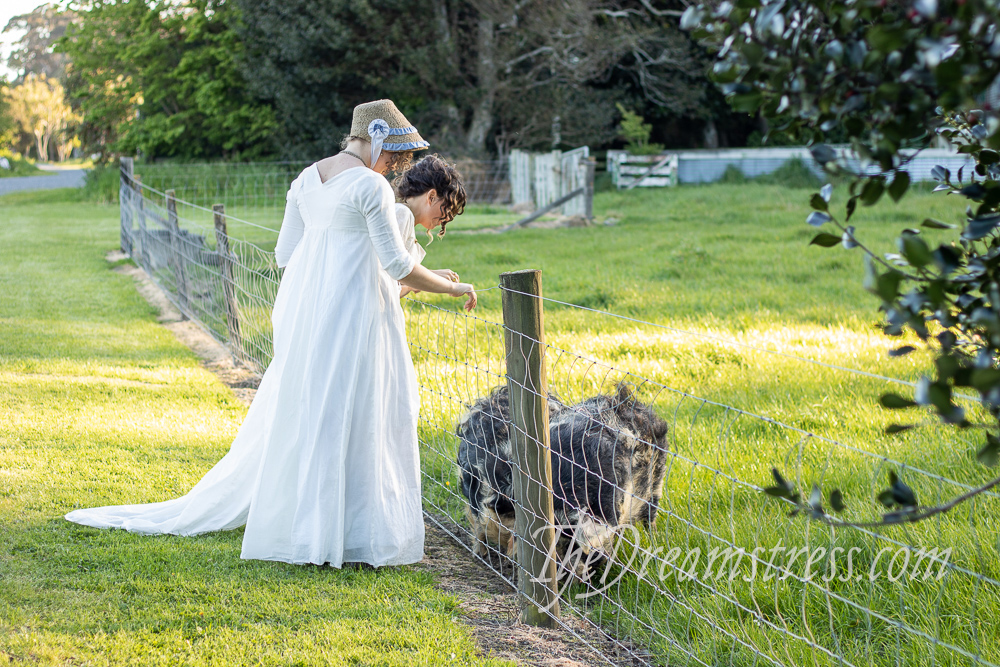
Loved the kunekune pigs and the entire post! It was sunny and delightful. Spring is greening all around you, and the pigs look snug and loved. Their fur and their faces surprised me! So very glad the breed survived: hooray, NZ!
Shetland sheep were disappearing too, but the population has grown again and the variety of coat colors and types of fleece, and bodies, has remained. Shetlands are a “primitive” breed, their gene pool wide, and they are tough, smart, disease-resistant, and good mothers, characteristics bred out of many commercial breeds. Yes, the dual coats some of them have — a long outer, rain-shedding coat, and the downy undercoat — don’t do too well in a regular American wool processing mill, as I’ve found trying to have the fleeces of my two ewes processed to roving. (I love readying fleece by hand to spin, but can’t keep up — they grow more long before I’ve done their last batch!) They don’t fit the commercial mold. Yet they are wonderful, social, crafty animals, with their own society, and if you sort an individual fleece, you have so-soft wool for fine shawls all the way to sock and rug wool, on one sheep. May we grow in valuing non-factory livestock. We have a duty to protect them, and they just may help save us.
Very best,
Natalie in KY
Oop, sorry to send a second note, but if you want to “meet” Lana and Nina (which mean “wool” and “girl” in Spanish), you can on my blog, in these posts: https://zipzipinkspot.blogspot.com/search/label/Shetland%20sheep?m=0
Again, very best, and thank you again for such a happy post,
Natalie
Oooh, a very worthwhile second note! What adorable sheep!
We think they are, too 🙂
I bred shetlands too in the 1980s, they were on the Rare Breeds Survival Trust list but came off of it during this time and we had quite a big breeders group then. In The U K the trust has done good work in saving a lot of farm animals from going extinct.
I just loved my sheep, I had 50 ewes, all different personalities and characters and yes the bucket was the way to train them, no chasing them with a dog and anyway you can’t round them up that way as they just scatter. We had a rare breed pig too, a Berkshire and she was so lovely.
Yes pigs are lovely creatures.
Good-tempered pigs with fur. Does it get any better than that?
It’s more bristle than fur , but they are very lovely! The bristle came off in my hand when I scratched their backs, because they were shedding in preparation for summer, and you could see how they made hairbrushes out of it, it was so stiff! We spent some time thinking of costume-y related things you could do with it.
I think I need to find some pictures of kunekune piggies without Regency clothes and send them on to my father – pigs (and wildhogs) are probably his favourite animals, and these are, indeed, adorable. 🙂
There are lots on the internet – they have become the favourite pig of hobby farmers in the US. And maybe I’ll find some ones I’ve taken over the years that don’t feature costume 😉
usatoday.comWhat a wonderful post! I loved seeing those piggies, and it says so much about you and your friends that you went back to make sure that their feelings weren’t hurt.
Thank you all for the comments about your own efforts to preserve animals. I only have a very small contribution: my own dog is almost certainly related to the dogs brought by First Nations people. I am so pleased that chihuahua and xolo dogs have experienced a renaissance, and it’s been a treat to learn about all the uses for these marvelous dogs across two continents! (grown for their fur, which was cut like sheep’s, as travois-dogs, as childminders, and therapeutically for arthritis)
You are right that food waste contributes so much to the climate emergency, and so glad that you mentioned it. I’ll post a link to a USAToday story. (The most ‘accessible’ newspaper, publishing such a story is a statement. https://www.usatoday.com/story/opinion/2018/09/21/food-waste-makes-climate-change-worse-how-you-can-help-column/1355988002/)
In my current city, they have municipal composting. At such a large scale, they can even compost meat, dairy, and eggs. With topsoil erosion another major problem, it’s pretty swell to think that this program helps 2 problems at once.
And I hope you don’t mind me offering a strategy for your readers:
-Most cities have a CSA program that feature “heirloom” vegetables, dairy, eggs, and even meats. If you don’t have space for plants or animals, then you can support your local CSA.
Looking forward to checking back to read if any others raise “heirloom” animals and plants. This blog has such neat readership.
Sorry, I think I said too much. I also think, through this rambling, that I have discovered just how much it bothers me when animals are overbred and homogenized. The poor little dears and their painful health problems. Yuck!
Thank you, again, for the commenters who shared about their own experiences raising robust and healthy and environmentally-appropriate animals!
You need to stop apologising for saying too much! I think your thoughts are really interesting, and even when I don’t agree with people’s viewpoints, it’s good to be exposed to different ideas and different takes on the world. Your comments are always welcome!
That’s neat about your dog! It’s kind of amazing how widespread dogs are – there were Polynesian dogs, but I think they are assumed to have either died out, or have completely inbred with ones brought in after European contact.
Thank you for the USAToday link!
And did you know my parents were CSA-ish farmers?
I was interested to find that kurī were related to some modern Indonesian dogs more closely than to the dingo (https://en.wikipedia.org/wiki/Polynesian_Dog)